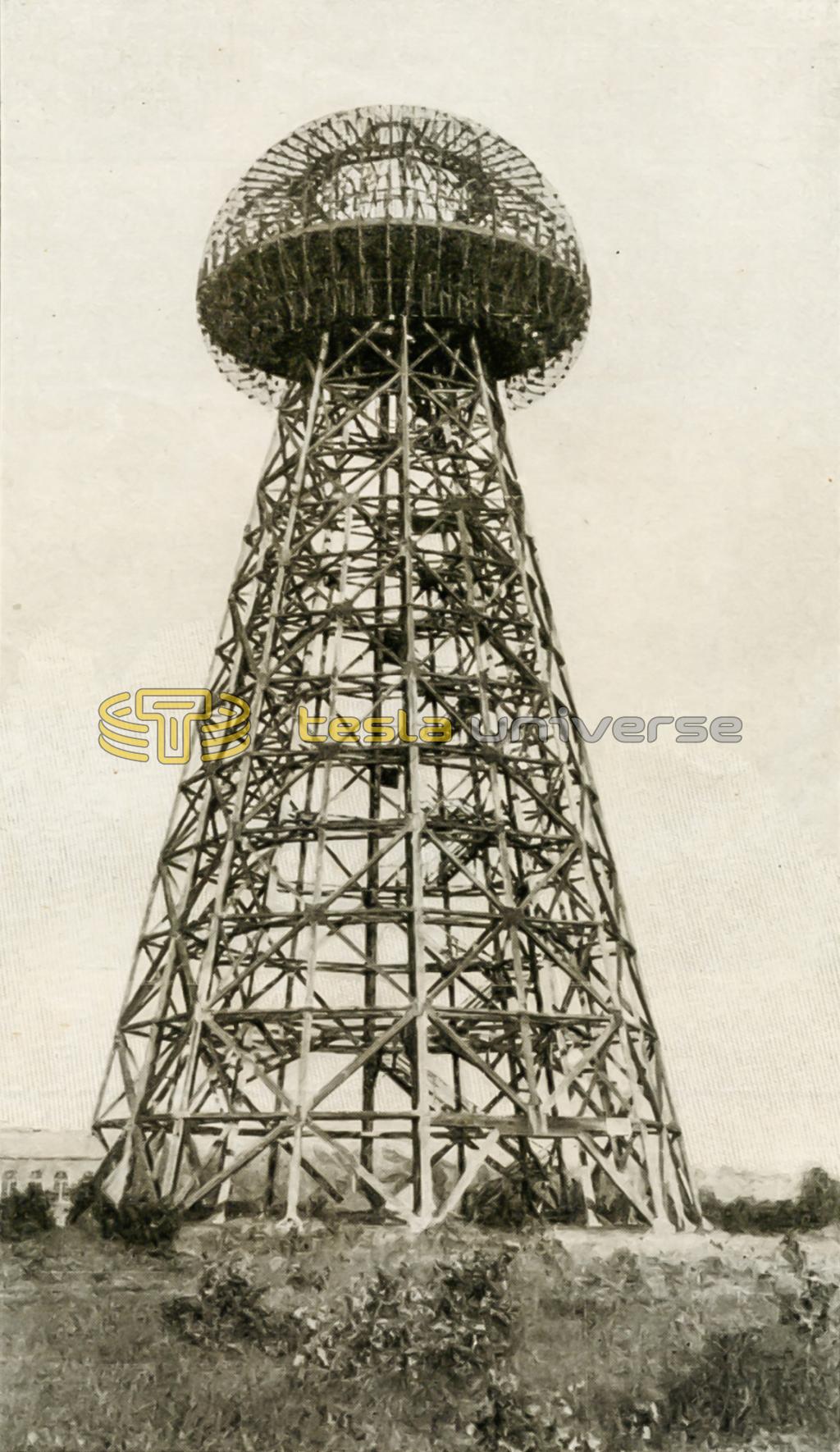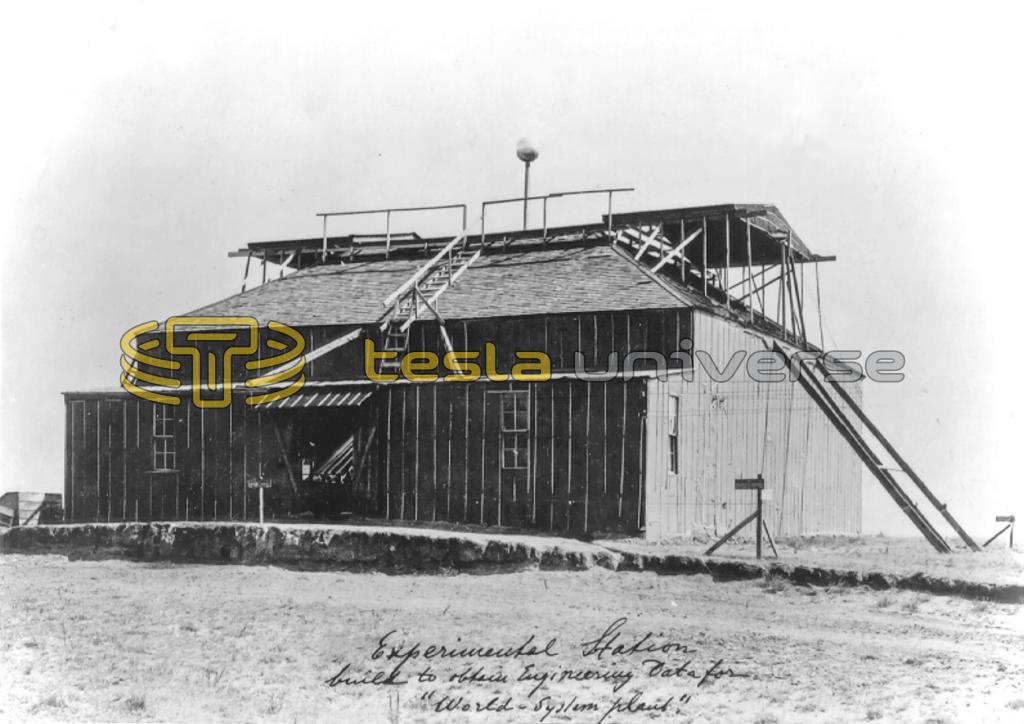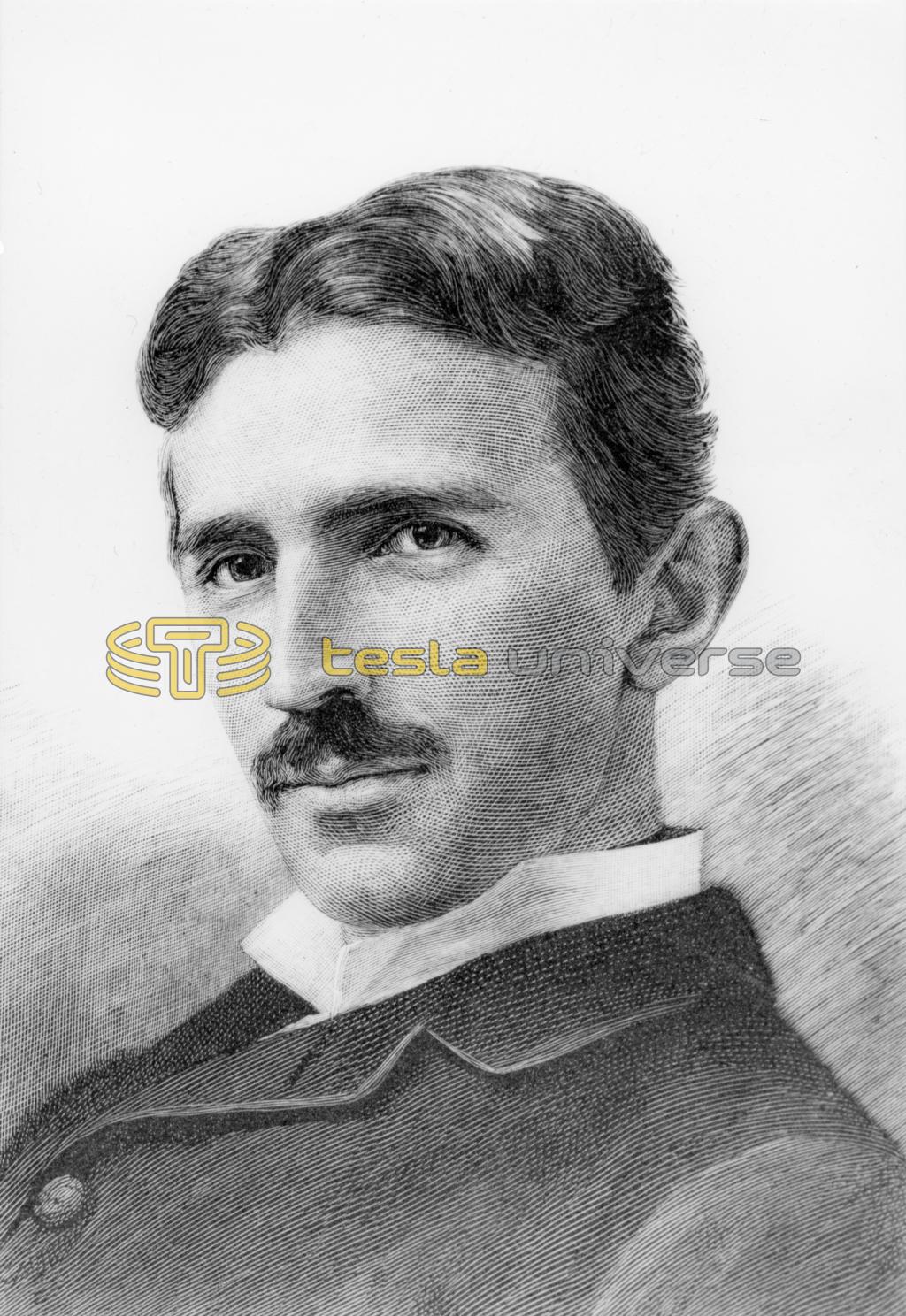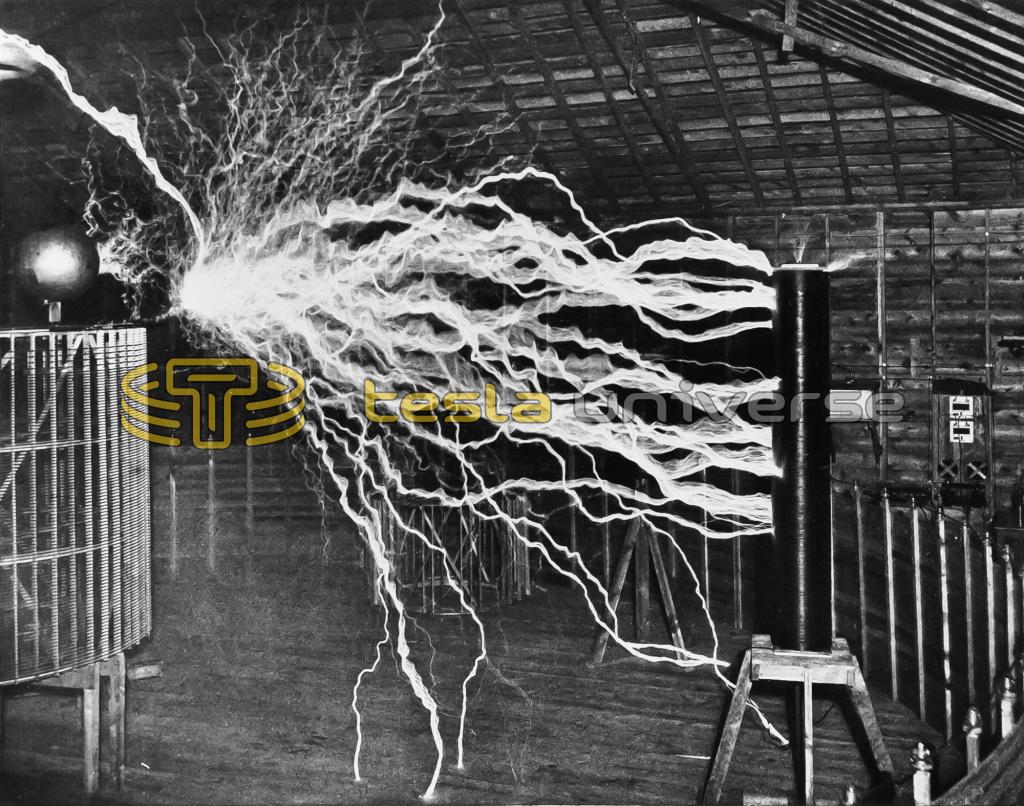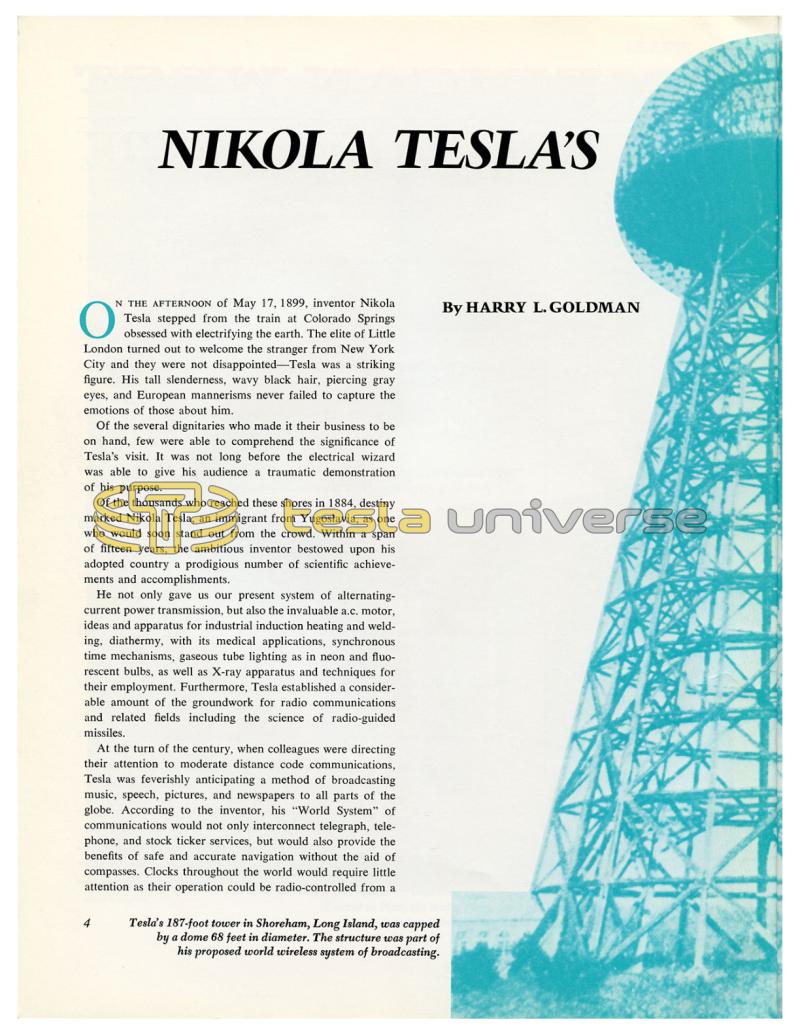
Nikola Tesla Articles
Nikola Tesla's Bold Adventure
Strange experiments conducted by an electronic wizard at the turn of the century
On the afternoon of May 17, 1899, inventor Nikola Tesla stepped from the train at Colorado Springs obsessed with electrifying the earth. The elite of Little London turned out to welcome the stranger from New York City and they were not disappointed — Tesla was a striking figure. His tall slenderness, wavy black hair, piercing gray eyes, and European mannerisms never failed to capture the emotions of those about him.
Of the several dignitaries who made it their business to be on hand, few were able to comprehend the significance of Tesla's visit. It was not long before the electrical wizard was able to give his audience a traumatic demonstration of his purpose.
Of the thousands who reached these shores in 1884, destiny marked Nikola Tesla, an immigrant from Yugoslavia, as one who would soon stand out from the crowd. Within a span of fifteen years, the ambitious inventor bestowed upon his adopted country a prodigious number of scientific achievements and accomplishments.
He not only gave us our present system of alternating current power transmission, but also the invaluable a.c. motor, ideas and apparatus for industrial induction heating and welding, diathermy, with its medical applications, synchronous time mechanisms, gaseous tube lighting as in neon and fluorescent bulbs, as well as X-ray apparatus and techniques for their employment. Furthermore, Tesla established a considerable amount of the groundwork for radio communications and related fields including the science of radio-guided missiles.
At the turn of the century, when colleagues were directing their attention to moderate distance code communications, Tesla was feverishly anticipating a method of broadcasting music, speech, pictures, and newspapers to all parts of the globe. According to the inventor, his “World System” of communications would not only interconnect telegraph, telephone, and stock ticker services, but would also provide the benefits of safe and accurate navigation without the aid of compasses. Clocks throughout the world would require little attention as their operation could be radio-controlled from a master station. In addition, he claimed that it would provide personal telephone communications between parties, regardless of distance, with an incredible device small enough to be carried in one's pocket.
As though this were not enough, Tesla's World System was to incorporate the transmission of electric power without the aid of wires. Swaggering in his own inimitable manner of grandeur, the inventor predicted the feasibility of running the street cars of London and lighting the lamps of Paris by the power generated from Niagara. The implications of such a reality fermented a passion which bordered on the threshold of physical pain. “Humanity will be like an ant heap stirred up with a stick,” cried the impetuous Tesla. “See the excitement coming!”
Tesla's New York experiments had become restricted by the physical limitations of his Houston Street laboratory. The four-million volt lightning-like discharges produced by his electrical transformers struck ceilings and walls. It was impossible for him to apply practical tests to his wireless transmission theory without accommodations more in proportion to the enormity of his imagination.
Evidently, Tesla's fame and stories of his scientific achievements had preceded him in his journey to the West. His arrival created quite a stir in that bustling community known “for its cosmopolite and high bred people” as well as “its reputation of always doing the right thing at the right time.” Noting Tesla's arrival, the Colorado Springs Gazette (May 28) declared, “This week has been noticeable for the presence of distinguished personages in Colorado Springs. Tesla, the electrician, second only to Edison, if indeed to anyone, is establishing his scientific headquarters here and will settle the question of wireless telegraphy in the weeks to come.” News reporters badgered the inventor with questions about his scientific achievements and for information pertinent to his presence in Colorado Springs.
Tesla satisfied their curiosity by informing them that he proposed “to send a message from Pike's Peak to Paris.” (This was more than two years prior to Marconi's famed transatlantic transmission.) The natives were well aware of a United States Signal Service (Weather Bureau) telegraph station at the summit of their famous mountain but Tesla's utterances were something else. The inventor further explained, “I will investigate electrical disturbances in the earth. There are great laws, which I want to discover, and principles to command.”
Tesla took a room at the Alta Vista Hotel with a view of the majestic Peak, affording him an opportunity for enjoying his favorite pastime, watching nature's lofty thunderbolts. Furthermore, he liked Room 207 because its number was divisible by three. Tesla's habit of carrying out experiments and repeated acts in numbers divisible by three was but one of the many phobias that haunted the inventor throughout his life.
Armed with a loan of $30,000 from John Jacob Astor, $10,000 from M. Crawford, a drygoods merchant, and the unending influence of his lawyer friend, Leonard E. Curtis, Tesla became fervently committed to a regimented schedule. He contracted for the construction of an experimental laboratory of his own design. In mid-July, a structure of awe and mystery stood isolated on the prairie pasture east of the Colorado School for the Deaf and Blind. It was a huge barn-like construction approximately 100 feet square and braced on three sides. Above its sloping roof was an 80-foot tower through which there extended a 200foot mast topped by a one-meter copper sphere. The forbidding omen hovering over the area was augmented by a fence with notices written in large black letters warning, “KEEP OUT — GREAT DANGER!”
The major part of the interior was taken up with a variety of Tesla innovations. The electrical wizard was pioneering virgin fields and his apparatus, yet untried and exhibiting all the characteristics peculiar to an H. G. Wells's fantasy, had to be constructed by highly trained technicians and shipped from the east. High-voltage transformers, dynamos, resonant-tuning devices, capacitor-discharge apparatus, oil-insulated capacitors (a Tesla invention), and a large metered control panel were among the items neatly spaced about the hall.
At one end of the laboratory was the secondary coil of a giant Tesla transformer, which the inventor termed a “magnifying transmitter.” Its primary coil (buried underneath the floor) was fifty-one feet in diameter and wound with heavy copper bars.
In the center of the secondary was another coil with a diameter of ten feet. It carried 100 turns of wire and served to function as an extension of the secondary. The 200-foot mast extended up through the center and supported a large copper cable, which connected to the one-meter copper sphere. Using these devices, Tesla intended to determine if the earth possessed an electrical charge (it does) and to institute experiments that would alter its magnitude (he did). Who but Tesla would be so bold as to undertake a scientific investigation of such proportions?
The mystified citizens of Colorado Springs kept a safe distance from the odd-looking structure. Passersby, such as those using the trolley line on Nob Hill, were amazed by its precocious appearance and would stare in unison with similar sorts of ungainly expressions. Herdsmen moving their animals out to pasture went about their work unable to conceal their contemplations.
Those whose curiosity led them to trespass the bounds of the property reported seeing strange blue flickering lights emanating from the enigmatic gadgets within the laboratory. Said one eyewitness, “Through this mass of intricate and dangerous mechanism, Mr. Tesla walks as fearlessly as if on the streets of the city.” A reporter who had managed a peek through the windows was startled to find a Tesla employee standing at his side. “Your life is in peril,” he said, “and you would be a great deal safer if you would remove yourself from the vicinity.” Tesla was extremely secretive about his work and always maintained a strict security. In order to discourage the overly curious, he publicly announced, “I have an instrument at my station which is capable of killing thirty thousand people in an instant.”
There were, however, a few residents who were allowed the privilege of infringing upon the sanctity of Tesla's Olympus. In the book, The Life of Nikola Tesla, authors Hunt and Draper mention Fred Stevens, a photographer, and Richard Gregg, an errand boy.
Nonetheless, it is doubtful whether anyone on either side of the Mississippi ever viewed a creation similar to the likes of Tesla's experimental station, and it is no wonder that the sight prompted one writer to say, “Mr. Tesla is a great scientist but a poor architect.”
By mid-summer of 1899, Tesla was able to utilize his Colorado experimental station for preliminary investigations of his wireless telegraphy theories. He was extremely pleased with this western state as the site for his experiments. Aside from the pleasantness of its natural beauty, the rarefied air provided exceptional opportunities for the study of high potential electrical phenomena. “No better opportunities for such observations as I intended to make could be found anywhere,” said Tesla. “Colorado is a country famous for the natural displays of electric force. In that dry and rarefied atmosphere the sun's rays heat the objects with fierce intensity. I raised steam, to a dangerous pressure, in barrels filled with concentrated salt solution, and the tin-foil coatings of some of my elevated terminals shriveled up in the fiery blaze.
“An experimental high-tension transformer, carelessly exposed to the rays of the setting sun, had most of its insulating compound melted out and was rendered useless. Aided by the dryness and rarefaction of the air, the water evaporates as in a boiler, and static electricity is developed in abundance.
“Lightning discharges are, accordingly, very frequent and sometimes of inconceivable violence. On one occasion approximately twelve thousand discharges occurred in two hours, and all in a radius of certainly less than fifty kilometers from the laboratory. Many of them resembled gigantic trees of fire with the trunks up or down. I never saw fire balls, but as a compensation for my disappointment, I succeeded later in determining the mode of their formation and producing them artificially.”
On one occasion, a fierce lightning bolt nearly demolished Tesla's station even though the actual strike occurred at a great distance. Reported Tesla, “A heavy cloud had gathered over Pike's Peak range and suddenly lightning struck at a point just ten miles away. I timed the flash instantly and, upon making a quick computation, told my assistants that the tidal wave would arrive in 48.5 seconds.
“Exactly with the lapse of this time interval a terrific blow struck the building, which might have been thrown off the foundation had it not been strongly braced. All the windows on one side and a door were demolished and much damage done in the interior. Taking into account the energy of the electric discharge and its duration, as well as that of an explosion, I estimated that the concussion was about the equivalent to that which might have been produced at that distance by the ignition of twelve tons of dynamite.”
It was during a violent Colorado electrical storm that Tesla came to make one of his most astounding scientific discoveries. After carefully adjusting his delicate measuring instruments, the inventor noted an unusual reaction to the earth's electrical activity. “No doubt whatever remained,” said Tesla, “I was observing stationary (standing) waves... Impossible as it seemed, this planet, despite its vast extent, behaved like a conductor of limited dimensions. The tremendous significance of this fact in the transmission of energy by my system had already become quite clear to me. Not only was it practicable to send telegraphic messages to any distance without wires, as I recognized long ago, but also to impress upon the entire globe the faint modulations of the human voice, far more still, to transmit power, in unlimited amounts to any terrestrial distance and almost without loss.”
Tesla later suggested the employment of standing waves as a means of detecting moving objects at great distances. “By their use... we may determine the relative position or course of a moving object, such as a vessel at sea, the distance traversed by the same, or its speed.” It wasn't until just before World War II, some forty-one years later, that radar — as foretold by Tesla — became a reality.
As a result of his investigations, Tesla concluded that the earth was not only electrified, but that it was charged to an extreme potential. Accordingly, if it were possible to increase the magnitude of the earth's electric charge by artificial means, it might also be possible to withdraw the applied energy anywhere on the globe. Basically, this meant that Tesla's “system” was to provide the benefits of electricity not only to the highly populated continents, but even to the most remote civilized outposts whether on land or at sea.
To accomplish this, however, would require the development of transmitting and receiving apparatus unlike any devices heretofore conceived. It was to this purpose that the electrical wizard dedicated his tireless efforts. At the end of the summer of 1899, the equipment stood ready, in statue-like silence, awaiting the highest man-made voltage experiment in history. Tesla was about to cross a new frontier — one far beyond that which anyone else had reached.
During the initial test, the mute electrical machinery suddenly transformed into lifelike fire-spitting demons. Power transformers supplying the heavy currents hummed a dissonant sixty-cycle tune. The floor beams vibrated a cacophonic reply. Spheres of the capacitor-discharge circuit became bridged by a machine-gun series of wrist-thick blinding flashes. The huge secondary of Tesla's transformer was crowned by an electrical fire of long finger-like streamers. A halo of harassing brush discharges enveloped the entire surface of the main switch panel.
Evidently, stray high-frequency currents had found a return path into the Colorado Springs Electric Company's facilities. Unknown to Tesla, the reaction was playing havoc with their generators and transmission lines. Lightning insulators within a dozen miles became short-circuited and glowed with purplish arcs.
The awesome discharges, thundering roar, and the production of choking quantities of pungent ozone portrayed an impression of impending doom. Waving his arms wildly, Tesla screamed an abrupt order to assistants to halt the experiment. Pandemonium gave way to a frightening silence.
Following an inspection of the apparatus and the making of critical adjustments, the inventor issued instructions for a continuation of the test. This time, however, he would take a position outside from where he could observe the copper sphere high above the roof. Standing alone some three hundred feet from the building, the wizard signaled a resumption of the experiment. He presented a bewildering sight. His inch-thick rubber heels, tight fitting cutaway coat, and black derby hat made him appear to be seven feet tall.
As before, the high-voltage equipment gave an immediate response. Full-fledged lightning bolts over 135 feet in length erupted from the copper sphere. Leaping about in unpredictable fashion, one leader followed the mast downward into the laboratory; another hit the 80-foot framework which was giving support to the 200-foot pole, while others were seen as wriggling streaks clawing at the sky above.
Nearby, in the village of Colorado Springs, the natives could hardly ignore the electrical wizard's scientific mischief. The thundering roar of his man-made lightning bolts could be heard as far away as Cripple Creek. People walking along the streets experienced the unpleasantness of sparks jumping between their feet and the ground. An electrical flame leaped from a tap when anyone reached for a drink of water.
So great was the power being thrown out by Tesla's “magnifying transmitter” that light bulbs within one hundred feet of the station glowed regardless of whether they were connected to any circuit and all the electrical equipment of a nearby fuel company ceased to function.
When Tesla's experiments utilized undamped waves (no streamers emitting from the copper sphere), horses at the livery stable suddenly bolted and kicked free of their stalls. Even the insects felt the effects of the electrical barrage. Butterflies became electrified and helplessly swirled in circles — their wings spouting blue halos of “St. Elmo's Fire.” One graphic account of a Tesla experiment tells of an incident which brought about the destruction of the main generator at the Colorado Springs Electric Company powerhouse.
Aside from what has been mentioned, little is known of the technical achievements of Tesla's Colorado adventure. The inventor claimed to have demonstrated the practical application of his theory in an experiment which lighted two hundred earth-connected incandescent lamps twenty-six miles from the laboratory. Unfortunately, no photographic record of this event has ever been published and there has been no indication as to the location of the receiving station.
Encouraged by the fruits of his labors, Tesla left Colorado on January 13, 1900, and returned to New York with plans for establishing a world radio broadcasting station (this was two decades prior to the advent of world communications). He obtained $150,000 from J. P. Morgan and began construction of a plant at Shoreham, Long Island. It consisted of a brick building to house the transmitting equipment and a massive 187-foot octagonal tower capped by a sixty-eight-foot mental-framed dome weighing nearly sixty tons.
The plant was never put into operation. Construction problems proved more costly than had been anticipated. And when rumors began circulating debasing the project as a fairy tale, Wall Street turned its back on Tesla's enterprise, a stroke that defeated one of the most unbelievable schemes in the history of human advancement.
Tesla's Colorado station came to an equally inglorious end. It remained intact for several years but eventually was torn down and its contents sold as payment in a suit for unpaid bills and employees' wages. Few references to Colorado history mention its existence and the omission makes it appear as though Tesla's bold adventure was nothing more than a passing dream.
Harry L. Goldman, a teacher of science in she public schools of New York State' has published numerous articles on Nikola Tesla and is former president of the Tesla Society.
